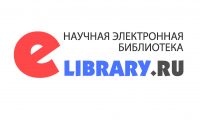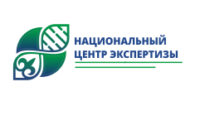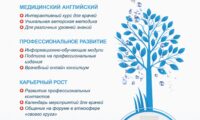Received: 04.01.2024/ Accepted: 15.03.2024/Published online: 29.04.2024
UDC: 615.453.2:616-001.17
DOI: 10.53511/pharmkaz.2024.72.31.041
Z.B.YESSIMSIITOVA1, G.E.YELTAY1,G.A. YESTEMIROVA1, A.S.KOZHAMZHAROVA2,
A.G.KARBOZOVA1, A.A.KYDYRKHANOVA1
1al-Farabi Kazakh National University, Almaty, Kazakhstan
2S.D. Asfendiyarov Kazakh National Medical University, Almaty, Kazakhstan
MORPHOLOGICAL CHANGES IN RAT SKIN AFTER THERMAL BURNS
Resume: Every day around the world, children and adults suffer from burn injuries. Burn injury is one of the global health
problems due to its high prevalence and mortality. The skin is the largest multifunctional human organ. The area of the entire
skin is on average 1.7-1.9 square meters. The skin has a wide variety of functions from protective to energy-saving and tactile.
Burns have a long history, but new methods of study are needed, this is due to the increase in the frequency of burns in
everyday life, production, as well as the complexity of the pathogenesis and treatment of burn disease. Pathological changes
that occur in the body of burned animals lead to the fact that in the first hours with extensive burn injury, circulatory
disorders occur in parenchymal organs, especially in the liver, lungs and adrenal glands. In the future, with severe
intoxication, severe dystrophic processes occur in the muscles of the heart and other internal organs. Recently, the main
areas of research into the pathogenesis of inflammation have become immunological, at the morphological level it has not
been sufficiently studied. The article shows the morphological features of the study in thermal burns of the skin of rats during
treatment with a different mechanism of action. Rats in the amount of 15 pieces were divided into 3 groups: the first control
group with a burn without treatment, the second group with a thermal burn, to which levomekol gel was applied to the burn
area, the third group was treated with powder from the medicinal plant yarrow Achillea millefolium L. On the 3rd, 7th, 14th,
and 21st days, the rats were taken out of the experiment, after which the skin pieces were fixed in 10% formalin for further
histological examination.
Keywords: common yarrow Achillea millefolium L., thermal burn, levomecol gel, histology.
REFERENCES
1 Semenov B.S., Stekolnikov A.A.,Vysotskiy D.I. Veterinarnaya khirurgiya, ortopediyai oftalmologiya. — SPb.: Kvadro, 2016. —
400 s.
2 Fedota N.V., Lukyanova D.A. Vliyanie mazey na osnove serebra i tsinka na regeneratsiyu kozhi pri modelirovanii
termicheskikh ozhogov // Izvestiya Orenburgskogo gosudarstvennogo agrarnogo universiteta. — 2014. — № 6. — S. 77-78.
3 G. Huang, K. Sun, S. Yin, B. Jiang, Y. Chen, Y. Gong, Y. Chen, Z. Yang, J. Chen, Z. Yuan, et al., Burn injury leads to increase in
relative abundance of opportunistic pathogens in the rat gastrointestinal microbiome, Front. Microbiol. 8 (2017) 1237.
4 Kolter J, Feuerstein R, Zeis P, Hagemeyer N, Paterson N, d’Errico P, Baasch S, Amann L, Masuda T, Lösslein A, Gharun K,
MeyerLuehmann M, Waskow C, Franzke CW, Grün D, Lämmermann T, Prinz M, Henneke P. A Subset of Skin Macrophages
Contributes to the Surveillance and Regeneration of Local Nerves. Immunity. 2019 Jun 5. pii: S1074–7613(19)30229-8. doi:
10.1016/j. immuni.2019.05.009.
5 Zhou S, Hokugo A, McClendon M, Zhang Z, Bakshi R, Wang L, Segovia LA, Rezzadeh K, Stupp SI, Jarrahy R. Bioactive peptide
amphiphile nanofiber gels enhance burn wound healing. Burns. 2019 Aug;45(5):1112–1121. doi:
10.1016/j.burns.2018.06.008.
6 L. Davenport, H.L. Letson, G.P. Dobson, Immune-inflammatory activation after a single laparotomy in a rat model: effect of
adenosine, lidocaine and Mg2+ infusion to dampen the stress response, Innate Immun. 23 (5) (2017) 482–494.
7 Medzhitov R. Transcriptional control of the inflammatory response / R. Medzhitov, T. Horng // Nat. Rev. Immunol. – 2009. –
V. 9, № 10. – P. 692–703.
8 Kunz M. Cytokines and cytokine profiles in human autoimmune diseases and animal models of autoimmunity / M. Kunz, S.
M. Ibrahim // Mediators Inflamm. – 2009. – V. 7, № 3. – P.159–179.
9 F.M. Wood, M. Phillips, T. Jovic, J.T. Cassidy, P. Cameron, D.W. Edgar, Steering committee of the burn registry of a, new z:
water first aid is beneficial in humans post-burn: evidence from a Bi-National cohort study, PLoS One 11 (1) (2016)
e0147259.
10 M. Rehn, G. Davies, P. Smith, D. Lockey, Emergency versus standard response: time efficacy of London’s Air Ambulance
rapid response vehicle, Emerg. Med. J.: EMJ 34 (12) (2017) 806–809.
11 A. Burger, J. Wnent, A. Bohn, T. Jantzen, S. Brenner, R. Lefering, S. Seewald, J.T. Grasner, M. Fischer, The effect of ambulance
response time on survival following out-of-hospital cardiac arrest, Deutsches Arztebl. Int. 115 (33-34) (2018) 541–548.
12 W. A. Dorsett-Martin, “Rat models of skin wound healing: a review,”Wound Repair and Regeneration, vol. 12, no. 6, pp.
591–599, 2004.
13 N. G. Venter, A.Monte-Alto-Costa, and R. G.Marques, “A new model for the standardization of experimental burn wounds,”
Burns, vol. 41, no. 3, pp. 542–547, 2015.
14 A. J. Singer, B. R. Taira, R. Anderson, S. A. McClain, and L. Rosenberg, “Does pressure matter in creating burns in a porcine
model” Journal of Burn Care and Research, vol.31, no.4, pp.646–651, 2010.
15 K. Pfurtscheller, T. Petnehazy, W. Goessler, I. Wiederstein-Grasser, V. Bubalo, andM. Trop, “Innovative scald burn model
and long-term dressing protector for studies in rats,” Journal of Trauma and Acute Care Surgery, vol. 74,no. 3, pp. 932–935,
2013.
16 Liu SS, Ge HY, Cheng SL, Zou Y, Zhang KL, Chu CX, Gu NL. Synthesis of Graphene Oxide Modified Magnetic Chitosan Having
SkinLike Morphology for Methylene Blue Adsorption. J Nanosci Nanotechnol. 2019 Dec 1;19(12):7993–8003. doi: 10.1166/
jnn.2019.16872.
17 Bakhach J, Abou Ghanem O, Bakhach D, Zgheib E. Early free flap reconstruction of blast injuries with thermal component.
Ann Burns Fire Disasters. 2017 Dec 31; 30(4): 303–308. PubMed PMID: 29983687; PubMed Central PMCID: PMC6033485.
18 Kaddoura I, Abu-Sittah G, Ibrahim A, Karamanoukian R, Papazian N. Burn injury: review of pathophysiology and
therapeutic modalities in major burns. Ann Burns Fire Disasters. 2017 Jun 30;30(2): 95–102. PubMed PMID: 29021720;
PubMed Central PMCID: PMC5627559.
19 Maden M. Optimal skin regeneration after full thickness thermal burn injury in the spiny mouse, Acomys cahirinus. Burns.
2018 Sep;44(6): 1509–1520. doi:10.1016/j.burns.2018.05.018.
20 Mathias E, Srinivas Murthy M. Pediatric Thermal Burns and Treatment: A Review of Progress and Future Prospects.
Medicines (Basel). 2017 Dec 11;4(4). pii: E91. doi: 10.3390/ medicines 4040091.
21 Pielesz A, Biniaś D, Bobiński R, Sarna E, Paluch J, Waksmańska W. The role of topically applied l-ascorbic acid in ex-vivo
examination of burn-injured human skin. Spectrochim Acta A Mol Biomol Spectrosc. 2017 Oct 5;185: 279–285. doi:
10.1016/j. saa. 2017.05.055.
22 Макиева М.С., Морозов Ю.А., Воронков А.В., Степанова Э.Ф., Ремезова И.П., Поздняков Д.И. Разработка
трансдермального геля с маслом лимонника китайского и оценка степени его влияния на работоспособность и
300
неврологический статус животных в эксперименте // Медицинский вестник Северного Кавказа. 2016. Т. 11. № 4. С.
532–536. DOI: 10.14300/ mnnc.2016.11126
23 Abdullahi A., Amini-Nik S., Jeschke M.G. Animal models in burn research. Cell Mol Life Sci. 2014 Sep;71(17): 3241–3255.
doi: 10.1007/s00018-014-1612-5.
24 Abraham JP, Stark J, Gorman J, Sparrow E, Minkowycz WJ. Tissue burns due to contact between a skin surface and highly
conducting metallic media in the presence of inter-tissue boiling. Burns. 2019 Mar;45(2):369–378. doi:
10.1016/j.burns.2018.09.010. Epub 2018 Oct 14. PubMed PMID: 30327231.
25 Pogorielov M., Kalinkevich O., Gortinskaya E., Moskalenko R., Tkachenko Y. The experimental application of chitosan
membrane for treating chemical burns of the skin. Georgian Med News. 2014 Jan;(226): 65–70. Russian. PubMed PMID:
24523336.
26 EH Wright, AL Harris и D. Furniss, «Охлаждение ожогов: механизмы и модели», Burns , vol. 41, нет. 5, стр. 882–889,
2015.


































